Canada’s vast lands boast huge forests, an abundance of glaciers, and uninhabited wilderness. As such, these lands are, for the most part, far away from human pollution and industrial or agricultural activities.
However, that doesn’t necessarily yield an abundance of safe water springs nationwide. Most Canadian wilderness remains unexplored, its water springs undiscovered, and the country only has a handful of active bottled water brands.
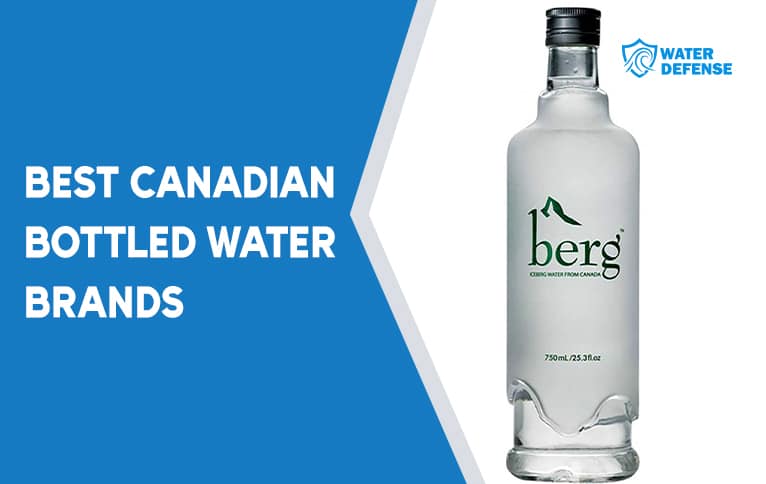
That’s mainly because the country is new to the practice of bottling water. Additionally, glaciers are typically low in mineral content, so only a few Canadian mineral water brands are worth mentioning.
Still, the few brands Canada has are some of the best globally. Let’s learn about them.
1. Jackson Springs
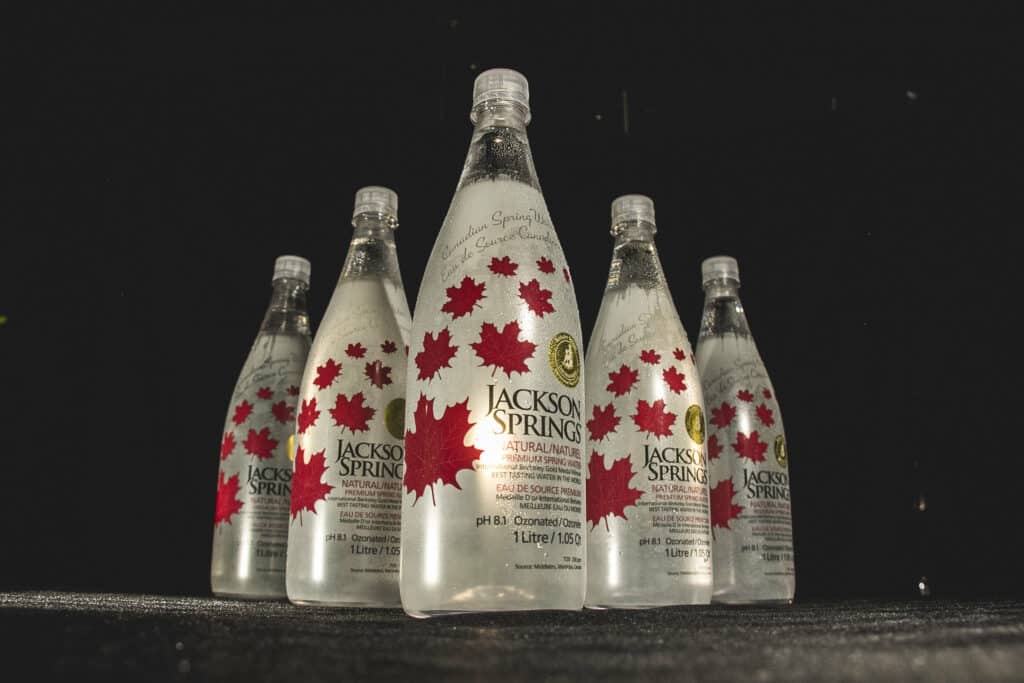
The source of Jackson Springs is located at the heart of the provincial forests of the Manitoba region. These forests, as well as the underground aquifers they surround and protect, are more than 13,000 years old, dating back to the last ice age.
The area’s rocky terrain has natural water filtration properties, so when the water emerges from the spring, it’s completely pure. Additionally, this particular terrain is among the most mineral-rich in the whole country, so Jackson Springs has a robust mineral makeup.
The water has 238 mg/L of total dissolved solids. Bicarbonates are the most prevalent mineral in it at 210 mg/L. It’s also rich in calcium and magnesium, with 42 mg/L and 13.8 mg/L, respectively.
As a general rule, the water’s mineral makeup determines its taste, and that’s the case with Jackson Springs. Due to its standout mineral content (compared to other Canadian bottled water brands), it has received a taste award at the Berkeley Springs International Water Tasting event.
Jackson Springs also entertains an alkaline pH of 8.1, making it an excellent antioxidant.
The brand bottles its water only in glass, which makes it eco-friendly and helps preserve its distinct taste.
2. Ice Age
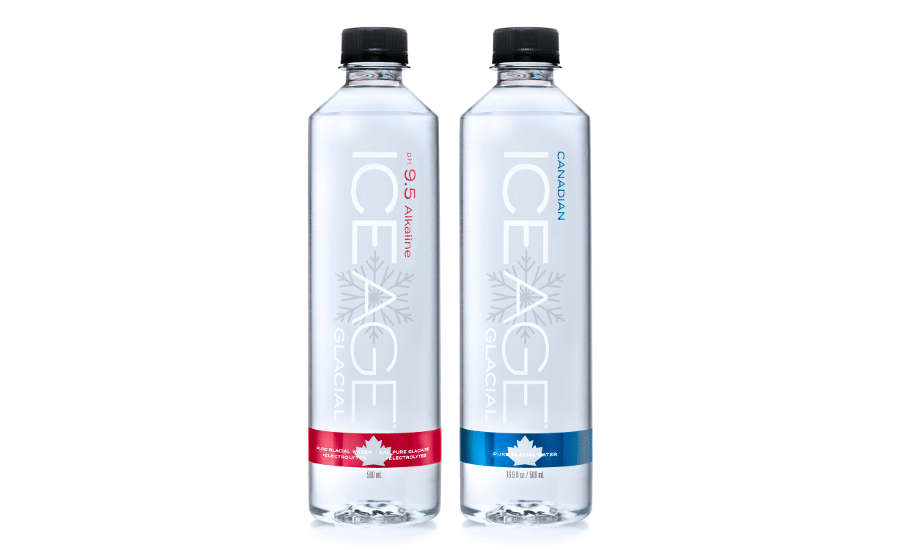
In terms of mineral presence, Ice Age is the exact antithesis of Jackson Springs. The Ice Age glacial water has only 5 mg/L of total dissolved solids despite the fact it’s sourced directly from the ground and doesn’t undergo a human-made filtration process.
The water source is the result of the snow melt from ancient glaciers of the Great White North. The meltwater travels through glacier rocks for 15,000 years and ends up in the glacial lakes hidden deep within the Toba Inlet.
Despite the length of the journey, the water doesn’t pick up a lot of minerals because these glacial rocks aren’t particularly mineral-rich. However, they do have excellent adsorptive and absorptive properties, so the water that accumulates in the glacial lakes is naturally filtered.
The Toba Inlet is naturally well protected from external contamination sources because it’s far away from populations and industries. Still, the British Columbia government and the Ice Age Glacial Water Company do their share to ensure the area remains unpolluted and the water collection sustainable and eco-friendly.
Lastly, Ice Age is one of the most acidic bottled water brands. When bottled, the water has a pH value of 5.5.
3. Thunderbird Spirit Water
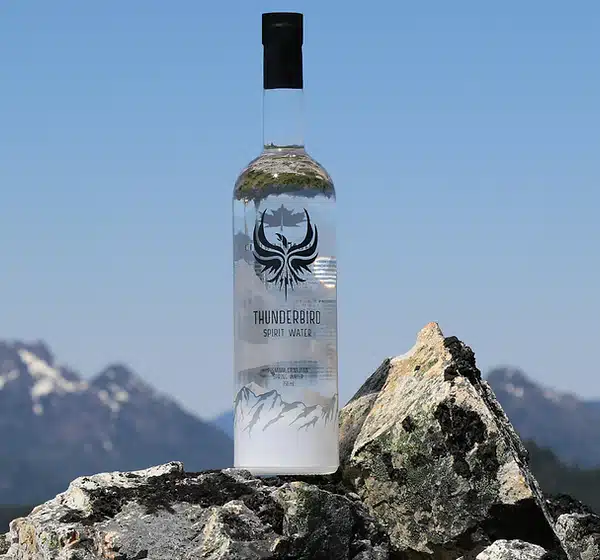
The Uchucklesaht tribe, whose ancestral home is in the Uchucklesaht inlet surrounded by the rainforests of British Columbia, believes that a majestic thunderbird protects the only lake in their area: the Hucuktlis Lake. Although we can’t present evidence that it’s because of this mythic bird, we can assure you the water is well-protected.
The Thunderbird Spirit Water is sourced from the Hucuktlis Lake. The water in the lake starts as rainwater and snowmelt on five different mountains that surround the lake and trickles down through their rainforests. The Pacific storms in this area continuously replenish the rains before the drops touch the ground.
Additionally, during its journey, the water passes through underground formations that naturally eliminate impurities and give it a low mineral content. In the final stage before bottling this water, Health Canada tests it to ensure it’s consistently pure.
The water has few ingredients and entertains a neutral pH of 7.5. Its TDS count is only 44 mg/L, with calcium at the forefront of its mineral content at 11 mg/L. Yet, the water has a distinctly fresh taste that makes it a great companion to naturally salty seafood like lobster.
The brand distributes its water only in eco-friendly glass bottles that look like wine bottles. It also makes it its mission to raise awareness about water quality and sanitary conditions in the areas inhabited by local tribes.
4. YICE
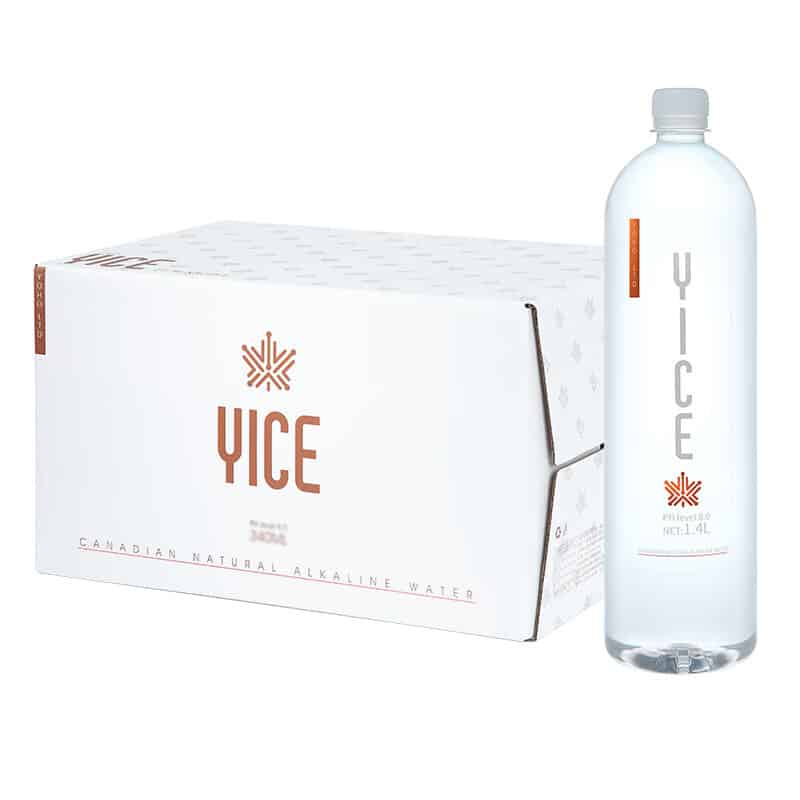
Like Jackson Springs, YICE is one of Canada’s rare mineral-rich spring water brands, thanks to the unique geological terrain around its water source.
The YICE water source sits near Lake Muskoka in the Ontario region. The region is part of the Canadian Shield, an ancient geological formation dating back 500 million years.
Throughout history, this formation has been a hotspot of lengthy volcanic activities and had glaciers on it. Because of that, the terrain is now covered with almost every kind of strata, from granites to ignimbrites to ancient glacial rocks.
Since all these rocks have natural filtration properties, the YICE water is naturally purified. Some of these rocks also enrich the water with minerals such as calcium, sulfates, and potassium. As such, the end product has 200 mg/L of total dissolved solids.
Additionally, the water is naturally alkaline, with a pH value of 8.1 and high oxygen levels. Combined, it makes an excellent antioxidant to fight acid reflux and balance the pH of our blood.
5. Berg
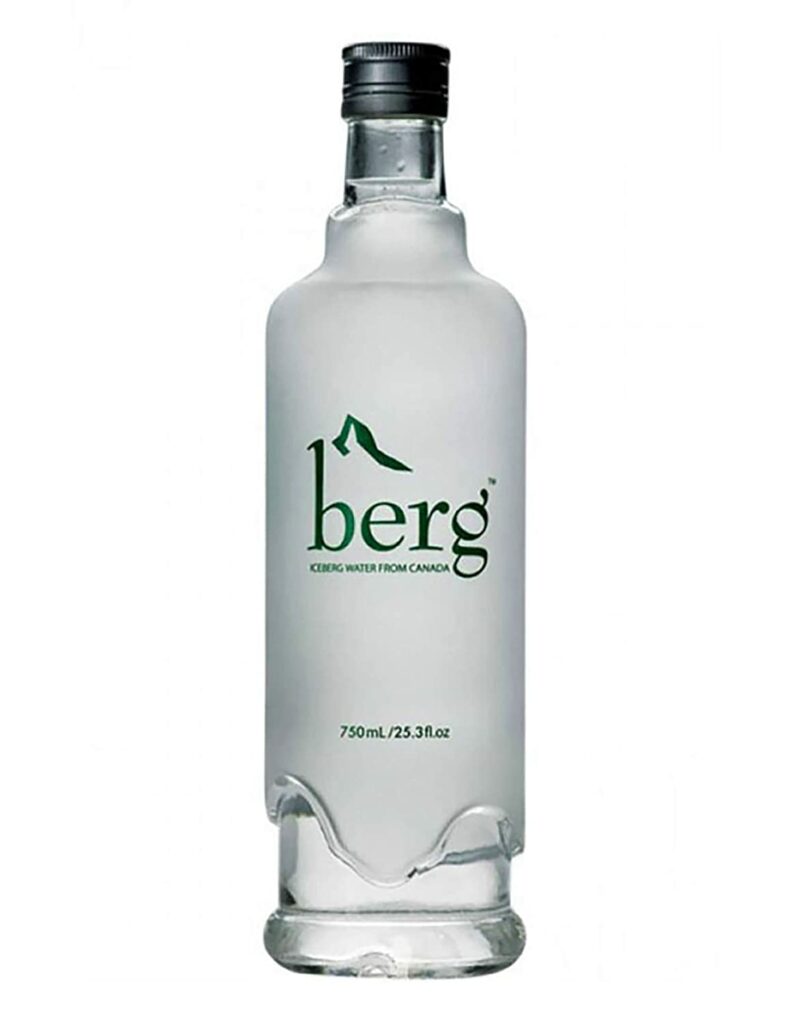
You may know Newfoundland (an island off the east coast of Canada) and Labrador (the continental east coast of Canada) because the region gave its name to two different dog breeds. But the area also houses one of the best bottled glacial water brands to hail from the country — Berg.
Similar to Ice Age, the Berg water is a natural result of glacial melt that takes 15,000 years to accumulate in glacial lakes between the unstable icebergs of Western Greenland.
The final product has a pure taste and only 10 mg/L of total dissolved solids, meaning it’s very low on mineral salts that give the water a bitter taste.
Although low-TDS water typically tends to be acidic, that’s not the case with Berg. It’s surprisingly on the alkaline side of the pH scale with a value of 7.8.
The brand distributes its water in PET bottles with unique designs reminiscent of icebergs.
